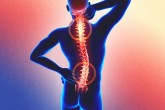
Breast cancer patients who undergo mastectomies often experience debilitating conditions during postoperative recovery. PT Center for Women, a physical therapy clinic in Wisconsin, explains that “pain may occur at the surgical scar, throughout the chest wall, and into the shoulders and arms. Mild to severe tightness can occur at the surgical site, and throughout the chest cavity and neighboring structures.” As a result, post-surgical patients often struggle with even small tasks: getting out of bed, showering, getting dressed, and using a cell phone. Patients also may experience difficulty taking a deep breath. And as these patients heal from surgery, scarring can cause ongoing pain or disfunction. Fortunately, physical therapy can help relieve post-surgery pain and stiffness, allowing patients to restore shoulder and arm function as quickly as possible.
Efficacy
According to this article from the American Physical Therapy Association, a recent Italian study discovered that “postoperative physical therapy that begins as early as 2 days after surgery significantly improves joint mobility and ‘widely improves the quality of life’ for women who underwent mastectomies.” The APTA indicates that the “women in the treatment group began physical therapy on the second postoperative day and participated in 40-minute rehabilitation sessions 5 times a week for the duration of the drainage, followed by 20 hour-long sessions after the drainage was removed.”
The results? In a word: impressive.
The women in the treatment group experienced significant improvement as early as five days post-surgery, with continued progress over the year following mastectomy. The women who did not receive physical therapy treatment, however, were unable to regain normal function for flexion, abduction, and internal rotation movements. Furthermore, the treated group experienced considerably less pain and achieved a higher quality of life than the non-treated group.
Treatment
So, what should you expect if you choose to seek physical therapy treatment post-surgery? As with physical therapy for other conditions, treatment begins with an evaluation. To treat post-mastectomy patients, physical therapists will examine the patient’s areas of tension or restricted mobility, especially around the incision. Because scarring can spread, a physical therapist also will examine the entire body, looking for other areas of decreased mobility, tension, and pain.
Treatment may differ depending on a patient’s specific post-mastectomy condition, but a typical plan of care involves hands-on interventions, therapeutic exercises (like stretches that can be performed lying down, sitting up, and standing), and deep breathing and relaxation techniques. A physical therapist also may suggest aerobic exercise to decrease the risk of lymphedema—a.k.a. chronic swelling—as a surgical complication. After several weeks, a physical therapist usually will begin to incorporate weight-lifting exercises to help patients regain strength in the affected body parts. Some physical therapy clinics—like Avila in North Carolina—also provide patients with additional breast cancer therapy services and treatments, including:
- Fittings for post-mastectomy bras and camisoles
- Fittings for breast prostheses (memory foam, silicone, and swim forms)
- Compression garment fittings (sleeves, bras, and vests)
- Education in proper body mechanics
Having breast cancer is scary—and the road to recovery after a mastectomy can be long and painful. But, as the folks at Avila affirm, “…while discomfort is fairly common during cancer treatment, it should definitely not be accepted as just part of the process.” Recovering under the care of a physical therapist can help breast cancer patients recuperate from mastectomy more quickly, with greater ease, and with less pain.


